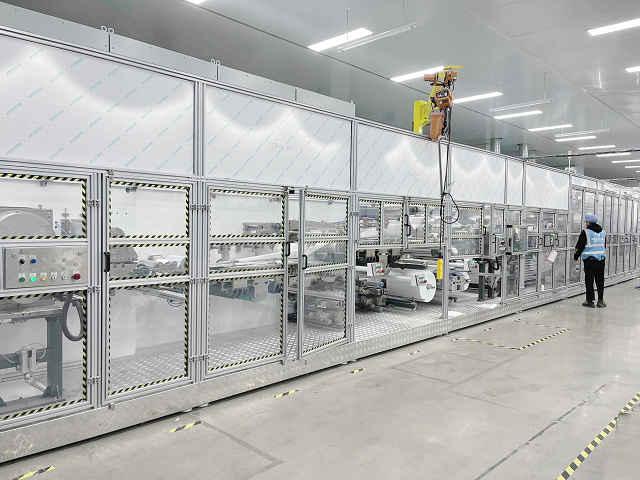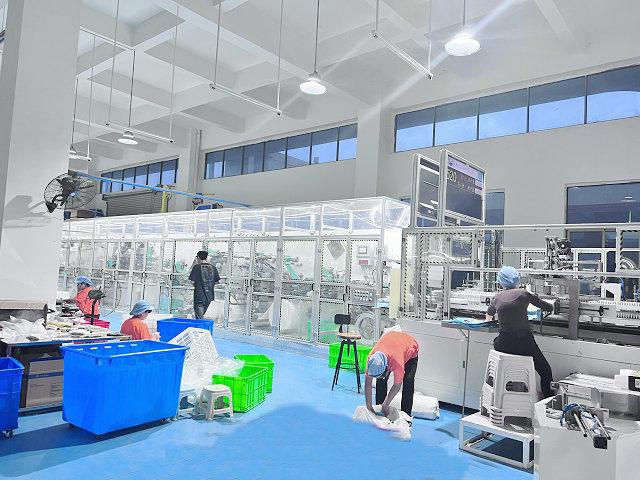Author:Haina Machinery Factory FROM:Diaper Machinery Manufacturer TIME:2025-01-13
Diaper machines have become increasingly popular in both home and commercial settings, offering a convenient solution for parents and businesses alike. These machines automate the process of manufacturing diapers, allowing for significant savings in time and labor. As the demand for eco-friendly and cost-effective diaper solutions rises, many are curious about the average cost of a diaper machine. This article will explore the various factors influencing the price of diaper machines, the types available on the market, and the potential return on investment for those considering this purchase.
Diaper machines come in various types, each designed to meet different production needs. They can range from small, semi-automatic machines suitable for home use to large, fully automatic systems used by manufacturers. The complexity of the machine, its production capacity, and the materials used all play a crucial role in determining its cost. Understanding these aspects is essential for making an informed purchasing decision.

There are primarily two types of diaper machines: semi-automatic and fully automatic. Semi-automatic machines require more manual intervention but are generally less expensive. These machines are ideal for small-scale operations or for families looking to reduce waste. In contrast, fully automatic machines handle the entire production process, from material handling to packaging. While these machines come with a higher price tag, they offer greater efficiency and output.
The cost of a diaper machine can vary widely based on several factors. First, the production capacity plays a significant role. Machines designed for high-volume production are typically more expensive due to their advanced technology and larger size. Second, the brand and manufacturer can influence the price. Well-known brands often charge a premium for their reputation and reliability. Third, the level of automation can significantly impact costs; fully automated machines usually come with a higher investment compared to semi-automatic options.
The average cost of a diaper machine can range from $20,000 to $300,000 or more. For semi-automatic machines, prices typically start around $20,000 and can go up to $50,000 depending on features and capacity. Fully automatic machines, however, can range from $100,000 to over $300,000. It’s essential for buyers to consider their production needs and budget when evaluating these options.
In addition to the initial purchase price, potential buyers should also consider the ongoing costs associated with operating a diaper machine. This includes maintenance costs, which can vary based on the complexity of the machine and the frequency of use. Regular maintenance is crucial to ensure longevity and efficiency. Additionally, operational costs such as raw materials, labor, and utilities must be factored into the overall budget.

Investing in a diaper machine can provide significant returns, especially for businesses in the diaper production industry. By automating the manufacturing process, companies can reduce labor costs and increase production rates. Furthermore, with the growing demand for eco-friendly products, companies that produce biodegradable or reusable diapers may find a lucrative market. Calculating the potential return on investment involves analyzing production costs, market prices, and demand trends.

For those interested in purchasing a diaper machine but concerned about the upfront costs, there are various financial assistance options available. Many manufacturers offer financing plans that allow buyers to pay in installments. Additionally, government grants and loans may be available for businesses focused on sustainable products. Researching these options can help ease the financial burden of such an investment.
In conclusion, the average cost of a diaper machine varies significantly based on multiple factors, including type, capacity, and level of automation. While the initial investment can be substantial, the long-term benefits and potential returns make it an attractive option for many. Whether for home use or commercial production, understanding the costs involved can aid in making an informed decision that aligns with individual needs and goals. As the market for diapers continues to evolve, investing in modern manufacturing technologies may prove to be a wise choice.
